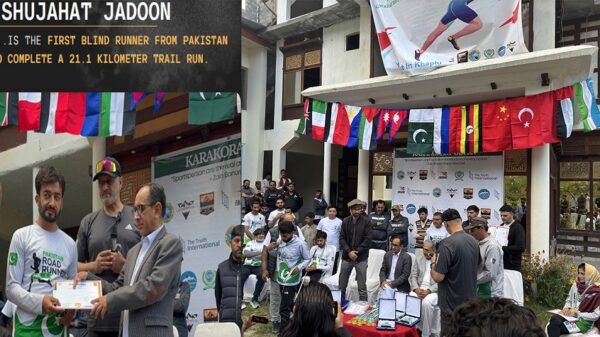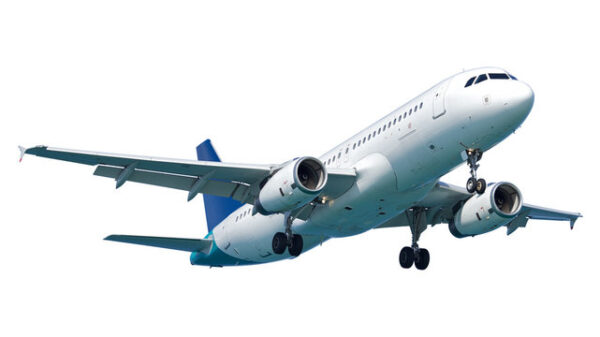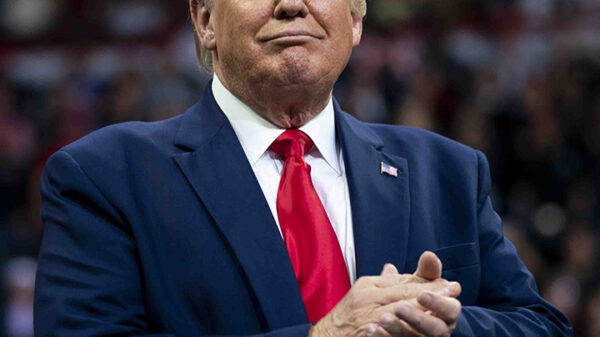MCC Resource Development Limited (MRDL), a wholly owned subsidiary of China’s MCC Tongsin, has operated the Saindak Copper-Gold Project (SCGP) for two decades now.
Over this period, the company has directly forked out to Pakistan a total of PKR 64.6 billion in royalty payments, presumptive taxes, profit share, service charges, machinery rentals, etc., besides affording precious employment opportunities to Pakistani workers, most of them from the Balochistan province.
The Truth International (TTI) had a one-on-one with Mr. Wang Jincheng, Chairman MCC Tongsin to mark the occasion. Given below is an abridged transcript of the conversation, lightly edited for reasons of clarity and readability.
TTI: Metallurgical Corporation of China has been involved with Saindak
Copper-Gold Project for last two decades. Can you brief us on how MCC got involved in this project?
WJ: The exploration of Saindak deposit was done by Resource Development Corporation (RDC) of Government of Pakistan for four years from 1974-78. The economics of mining Saindak deposit was however very poor due to low metal prices and absence of any infrastructure around Saindak.
For ten long years (1978-87), RDC tried in vain to get an international investor or joint venture partner for Saindak project. The GoP however approved the construction of this project at its own cost so as to provide employment in a far flung area of Balochistan.
On the invitation of RDC, the Metallurgical Construction Corporation of China (MCC), a Chinese state-owned company, signed a turnkey EPC Contract on 23 September 1990 to construct Saindak Copper-Gold
Project at a cost of USD 196.810 million (FEC USD 151.28 million; LC PKR equivalent to US USD 44.982 million) with a supplier’s credit of USD 84 million.
The capacity of the Project designed by MCC and the machinery and equipment included in the offer had the capacity to produce 15,000 tons/year of blister copper. The provision of infrastructure (power, water, residences, school, hospital etc.)were responsibility of GoP/SML.
MCC constructed the Saindak Project as per given schedule, put it on trial production from August 1995 for four months as per contractual term and handed over the Project to RDC (renamed Saindak Metals Limited or SML). During trial production period, 1,541 tons of blister copper and 9,000 tons of copper concentrate were produced.
However, SML could not continue project operation due to a lack of working capital and refusal of banks to lend due to absence of necessary experienced personnel to run the project and very low metal prices hence the project remained closed for many years.
In April 2000, SML advertised in the national and international mining magazines an “Invitation for Expression of Interest (EOI) for Leasing of Complete Copper Gold Project in Pakistan”. The advertisement also appeared in the Mining Journal published from London on 14 April 2000. MCC responded to the EOI and was prequalified along with five other foreign companies.
MCC was declared as successful bidder and a lease contract initially for 10 years, subject to extension was signed between SML and MCC on 30 November 2001, which became effective from October 2002, after its terms were approved, both by the Government of Pakistan and Government of China. The lease contract required MCC to rehabilitate the Saindak project at its own cost and risk and bring it on production.
In case profit accrued from the production operations, MCC had to pay half of that to SML but in case of loss, it had to be borne by MCC alone. MCC was also required to discharge liability of taxes on export revenue of Saindak as an Export Processing Zone (EPZ) and pay royalty to GoB as a percentage of value of exported goods. MCC is operating the Project successfully for the last eighteen years, benefitting the government and the local population.
TTI: How good is the Saindak Deposit? WJ: Nothing fantastic compared with porphyry deposits elsewhere in the World or even with Rekodiq. South Ore body having on the average 0.44 percent copper could not have been mined economically if it did not contain 0.476 gm gold /ton of ore. Similarly some part of the north ore body could be economically mined as it contained on the average 0.382 percent copper and 0.247g of gold/ton of ore. The east ore body has only 0.364 percent copper and nominal 0.13 gm/ton gold.
At Rekodiq, Tanjeel deposit has 0.6 percent copper and in western porphyries there is
0.5 percent copper with 0.3 gm/ton gold. At Saindak 960 tons of rock has to be mined to get only 315 tons ore which after processing produces just one ton of blister copper, having about 98.5 percent copper and about 100 grams of gold. Another matter about ores is their mineral contents. An ore may have many mineral contents but that does not mean that all are economically recoverable.
TTI: How much blister copper you have produced during last 18 years?
WJ: By the end of 2020, the cumulative processing of raw ore by MRDL was 79.84 million tons, and the cumulative production of blister copper was 267,575.71 tons, including 24,444.49 kg of gold and 41,958.33 kg of silver. Accumulated sales revenue is about USD 2.36 billion, including USD 764.95 million for gold and USD 16.07 million for silver contents.
TTI: How much have your 18 years of operation at Saindak benefited Pakistan?
WJ: Besides providing employment since 2002 to over 1,700 Pakistanis, most of them from Balochistan, the MRDL has paid out USD 314 million in profit share and USD 8.5 million in machinery rentals to Saindak Metals Ltd; USD 11 million as service charge to the Export Processing Zones Authority; USD 22 million in presumptive tax payment to the federal government; and USD 3.6 million as profit share to the government of Balochistan for CSR activities; in addition to PKR 9.8 billion in royalty payments, also to the provincial government.
TTI: What benefits local community gets from Saindak Project?
WJ: MRDL is a subsidiary of MCC, a State owned Company of the Chinese Government which has a generous policy on Corporate Social Responsibilities (CSR). MRDL has therefore always been proactively providing facilities for people’s well-being.
Specifically, the Project has laid water and power supply lines and supplied free purified water and electricity to the surrounding villages which has helped Saindak region step out from its “oil lamp era” towards electrification era and tap water, which however is solely dependent on Saindak Project.
The Saindak Model High School, managed by MRDL, enrols children from surrounding villages and provides free of charge uniforms, workbooks, school buses for students, and salaries to the teachers. The
Saindak Hospital provides convenient, affordable and sophisticated medical services for local people, under expert Chinese and Pakistani doctors.
By the end of 2020, the Project had provided utilities and services worth USD
20 million including water and power supply, education support, and medical care. MRDL also has undertaken road maintenance worth USD 3 million for people’s wellbeing.
It may be of interest to note that the Saindak’s expenditure on CSR activities is almost forty times its obligation under the Petroleum Concession Agreement on an oil or gas company having a similar level of yearly income as that of Saindak.
TTI: How is the security situation at Saindak?
WJ: The Saindak Project is located in a very politically sensitive area bordering with Afghanistan and Iran and there are always security threats. The movement of Chinese personnel from Saindak Project to Karachi (for onward travel to China) involves a high risk road travel of 350 KM to Dalbandin, which is served by a PIA flight once a week from Karachi.
There have been many incidents of terrorist attacks on personnel vehicles and on goods carrying convoys. To cover this security aspect of the Project MRDL has entered in to contracts with FC of Balochistan to provide security cordons to the Project and security escorts to the moving convoys of personnel and of incoming and outgoing goods.
For this service of FC Balochistan, MRDL pays to FC yearly over PKR 60 million. In order to avoid road travel of Chinese and ensure their safety, an airstrip is being constructed by MRDL at its own cost at Juzzak, 20 km from the project site, so our Chinese staff can travel to and from Karachi via chartered ATR flights.
TTI: Why is MCC not constructing a copper refinery in Balochistan?
WJ: The production of Saindak is too small for a refinery to be feasible. GoB can plan to invest in a large smelter and refinery provided there is enough local mining activity and production of copper concentrate to enable smelter and refinery to operate on full capacity.









